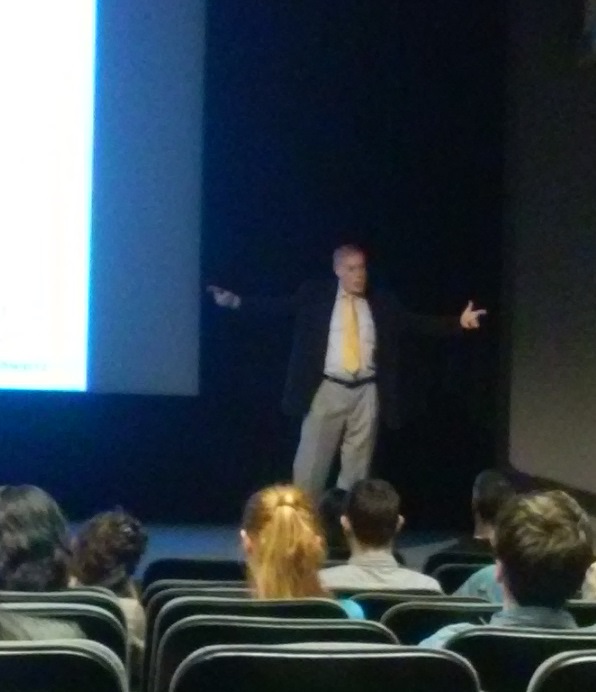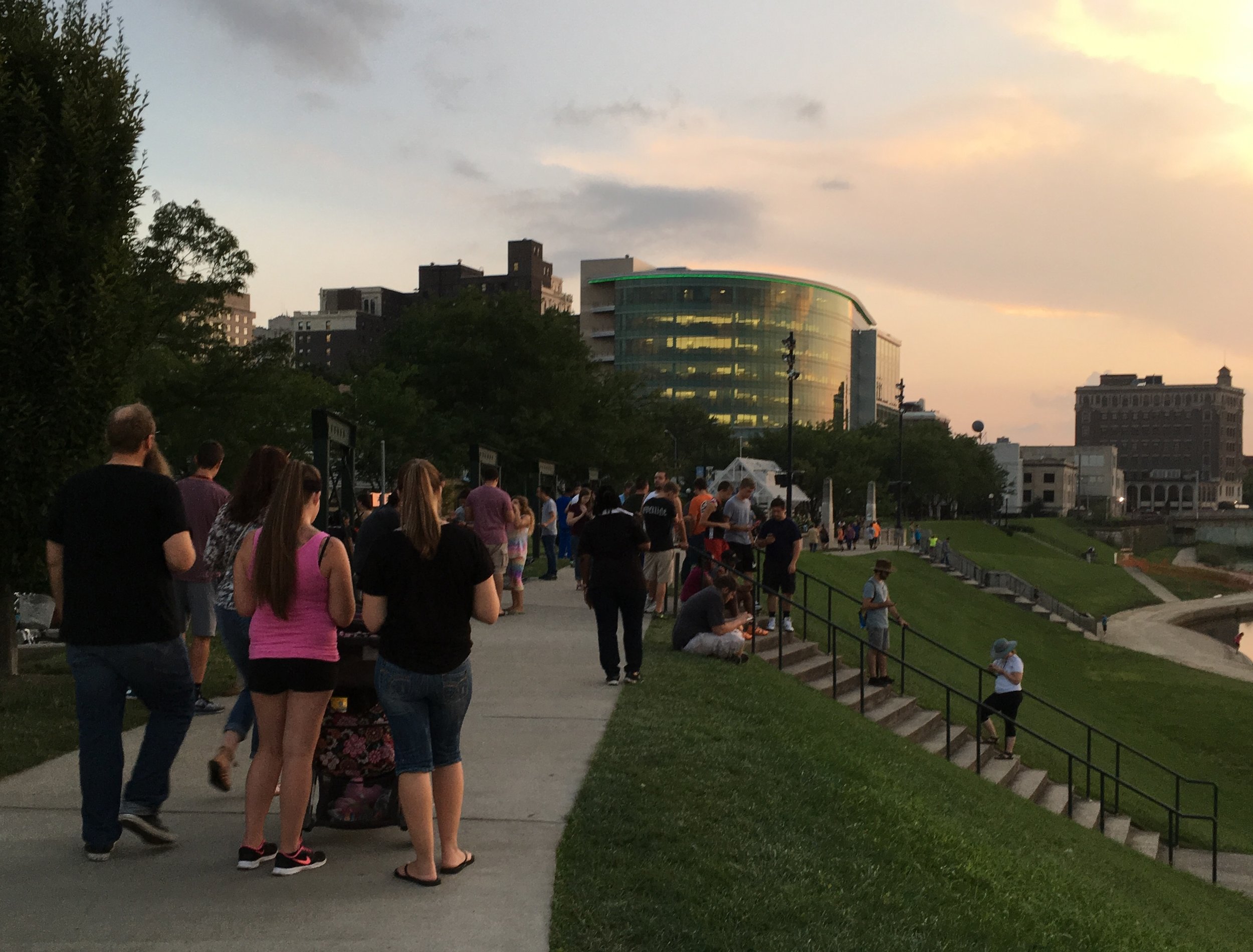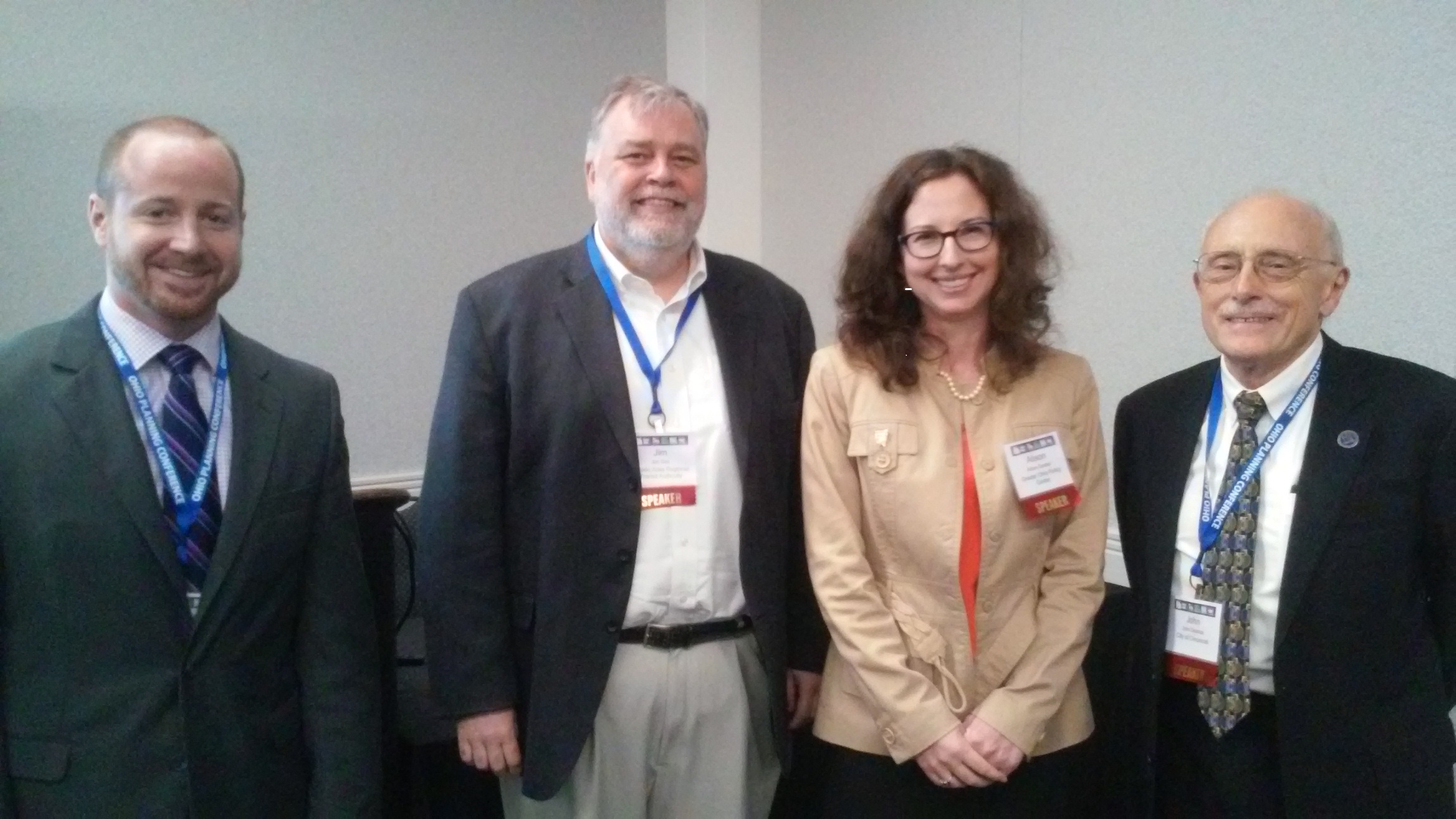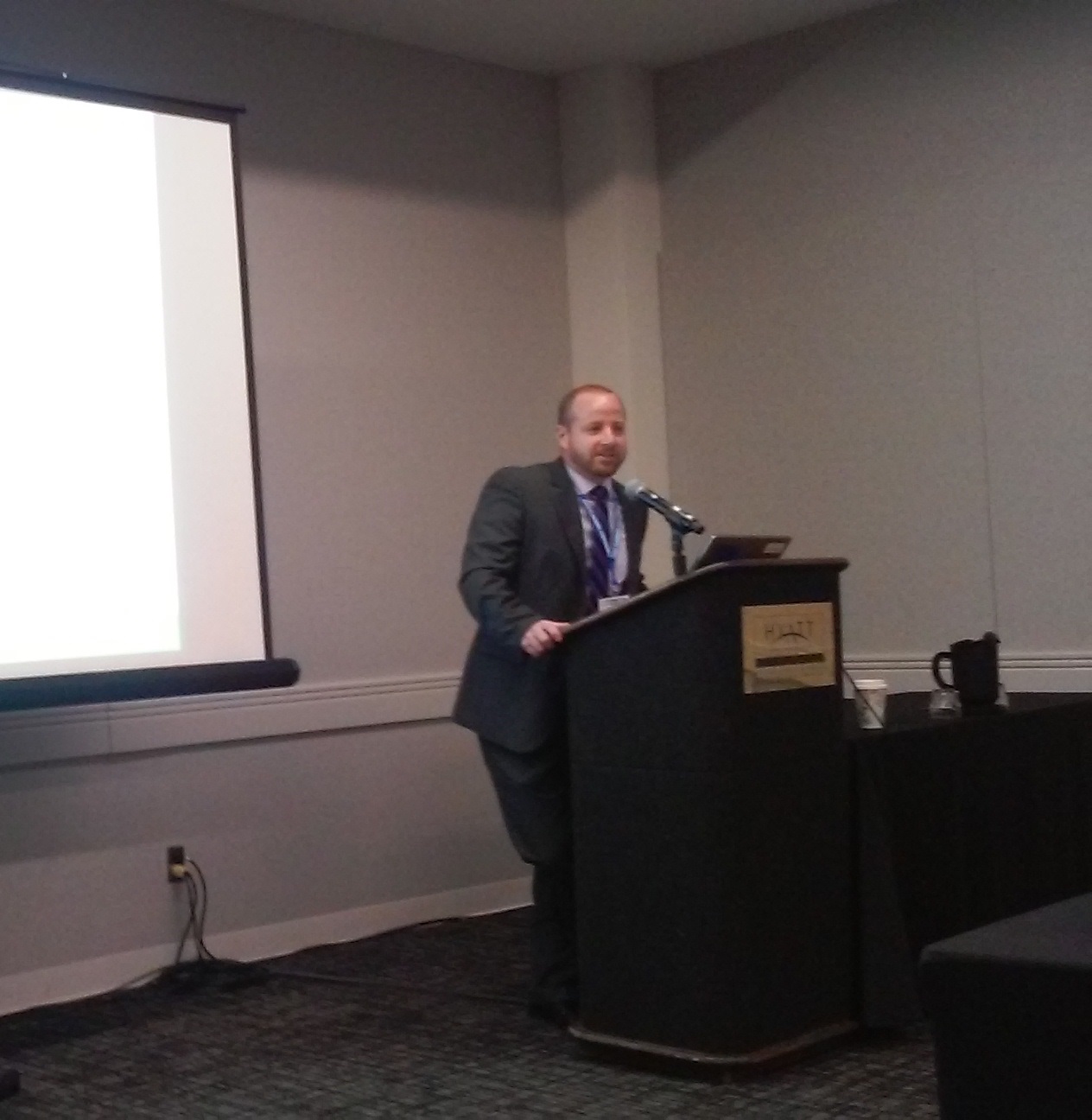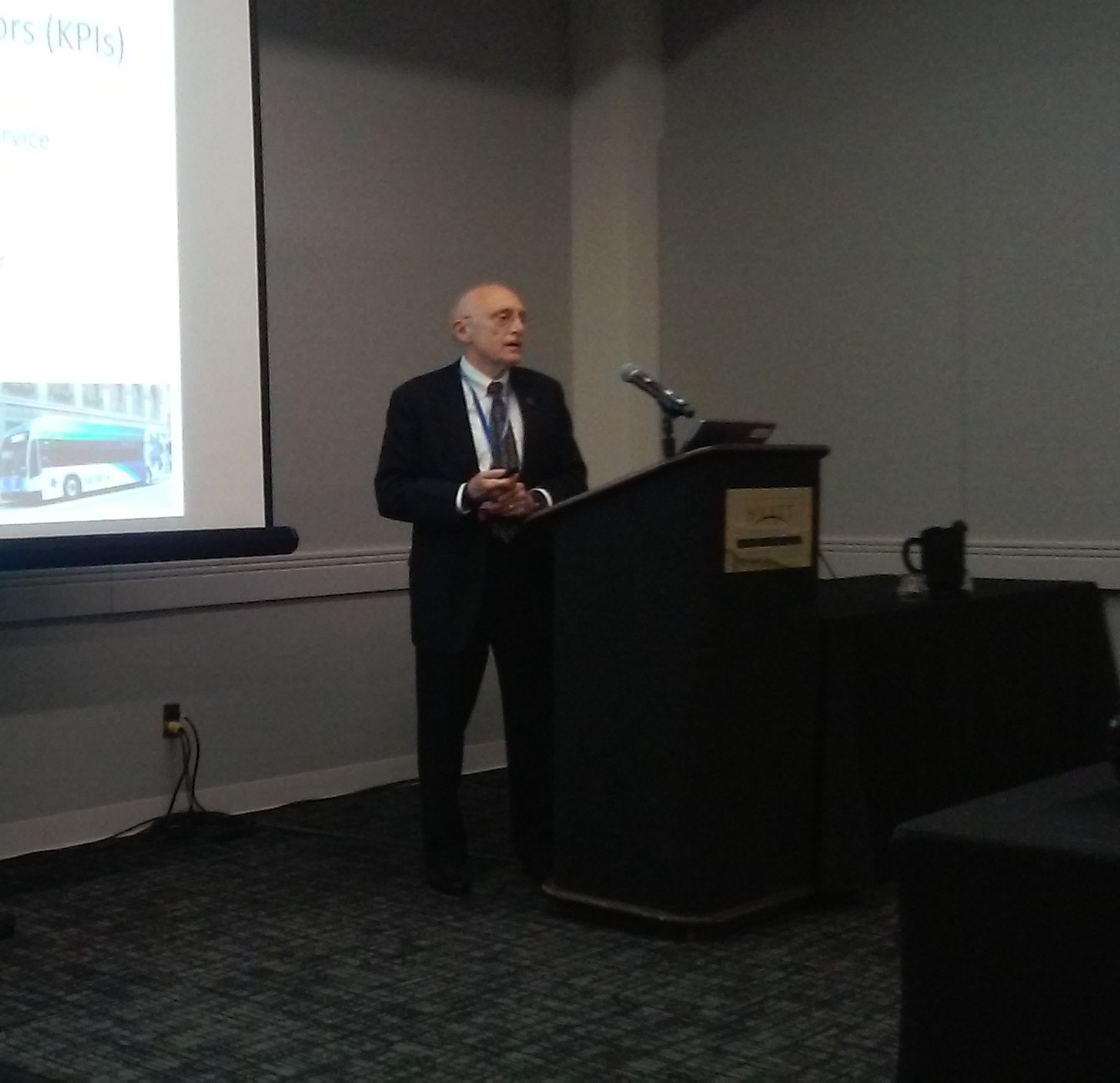By Jason Warner, GOPC Manager of Government Affairs
This month, GOPC was pleased to join with our colleagues at the Mid-Ohio Regional Planning Commission (MORPC) as a part of a panel discussion at the Glenn College Leadership Forum at The Ohio State University. The panel, Keeping Things Flowing: Water and Transportation Needs in the 21st Century, focused on the growing concern about infrastructure deterioration in the state and addressed ways in which local and state governments can identity and implement innovative strategies to take on these twin crises head-on.
Jon Honeck, Ph.D., Senior Policy Fellow with GOPC, presented on Ohio’s Water and Sewer infrastructure needs, with special focus on a growing issue that often is overlooked when considering this critical utility service, stormwater infrastructure. Most of Ohio’s water and sewer infrastructure was installed in the late 19th and early 20th Century, and especially in major metropolitan downtown areas, the systems have not been updated to meet the needs of growing populations and demands of the 21st Century. This is especially true of stormwater systems. With some studies suggesting that rain events are now producing more precipitation than they did even 20 to 30 years earlier, aging sewer systems that combine wastewater and stormwater are often overwhelmed, resulting in releases of raw sewage from aging systems into rivers and streams.

Photo Credit: John Glenn College of Public Affairs
Estimates show that Ohio needs $14.1 billion for wastewater treatment upgrades alone between 2012 and 2032, in addition to another $12.1 billion for upgrades and replacing to the state’s drinking water systems over 20 years. That is a total of $26.2 billion in infrastructure needs in just 20 years, and that does not include costs to identify and replace lead pipes, which service an estimated 650,000 homes and businesses in the state.
Coming up with the necessary funding to upgrade this aging infrastructure is complicated by the elimination of federal grants for water and sewer systems in the 1980’s. The feds now provide revolving loans to local governments to assist in system repairs and upgrades, but local communities facing economic problems must repay the loans over time, which is an challenge many small communities in the state cannot afford.
Among the potential solutions that could help to mitigate this future crisis that Honeck discussed during the forum include new financial tools which could provide either credit enhancements or loan guarantees for small communities that lack necessary funding resources, regionalization of water systems that encourages smaller communities to band together and pool limited resources to better afford work which needs to be done, public-private partnerships, and increased state funding in revolving loan funds and grant programs.
Thea Walsh, the Director of Transportation Systems and Funding at MORPC, next provided an overview of Ohio’s transportation infrastructure and the needs it faces in order to maintain the state’s competitive edge. Ohio’s interstate highway system is the 12th largest in the nation, and ranks 5th in overall traffic volume and 4th in truck traffic volume. Ohio boasts the 2nd largest inventory of bridges in the nation. Beyond roadways, Ohio also ranks 4th nationally in freight rail mileage, hosting 35 freight railroads and 5,305 miles of rail.
Despite these impressive statistics, the American Society of Civil Engineers has graded Ohio’s 125,000 plus miles of roads a ‘D’, finding that 43% of Ohio’s roadways are in critical, poor, or fair condition. Of greater concern is a finding that 2,242 of the state’s 27,015 bridges (8% of total bridges), are structurally deficient. The overall cost to motorists in the state, the personal cost of driving on roads in need of repair, is $3.3 billion per year, which amounts to $413 per motorist.
Ohio receives a significant portion of its overall transportation funding from the Federal Highway Trust Fund, which constitutes 45.1% of the Ohio Department of Transportation Revenue (FY12-14), while 32.9% is generated from the state motor fuel tax. The Federal Highway Trust Fund is supported from the federal gas tax, currently 18.4 cents per gallon of gasoline. That rate has remained unchanged since 1993. The state motor fuel tax is 28 cents per gallon of gasoline, and has remained unchanged since 2005. Moreover, because of constitutional limitations, this fuel tax revenue may only be used for highway construction, which precludes its usage toward public transportation projects. GOPC is constantly seeking ways of funding and modernizing all modes of transportation, including transit, biking, and walking.
Because the Federal Highway Administration has estimated that $170 billion in capital investment is needed annually to improve only roadways nationwide, it will be necessary in the future to increase revenue in order to make the required improvements. This will likely include raising fuel taxes, but also involve alternative sources of revenue as automobiles are becoming more fuel efficient and more vehicles that run on alternative sources (hybrid, electric) are operating on roadways.
One alternative that was discussed is a pilot program underway in the state of Oregon where individuals have volunteered to have tracking devices installed in their vehicles to track the number of miles they are traveling, and then paying per-mile fees to help fund highway and road construction and improvement. Other alternatives include the construction of new tolled infrastructure, an alternative that has been discussed to fund improvements on the Brent Spence Bridge in Cincinnati (Ohio has approved the toll bridge, Kentucky has not) and public private partnerships.
It was clear from the discussion that difficult decisions will need to be made in the months and years ahead. Investment in the state’s critical infrastructure, including drinking water, stormwater, and transportation, is necessary for two reasons. First, it is of paramount importance to ensure public health and safety. Without improvement to the state’s water systems, Ohio runs the risk of seeing repeats of the public health crisis in Flint, Michigan caused by lead contamination in the city’s water system, or the tragic failing of critical infrastructure such as the collapse of the I-35W bridge in Minneapolis several years ago. Secondly, these systems are of critical importance to our state’s economy. Ohio is at the center of the nation’s economic livelihood, located within a day’s drive of 50 percent of the country’s population, with tens of thousands of jobs tied to transportation, manufacturing, and logistics. Investment in quality water and transportation systems will ensure Ohio’s economic stability in the years ahead.
View the PowerPoint presentation here




